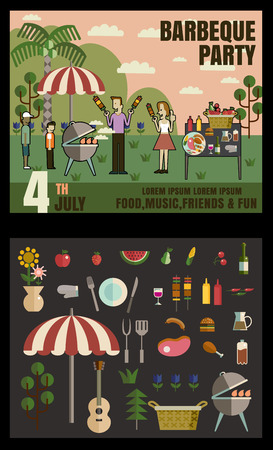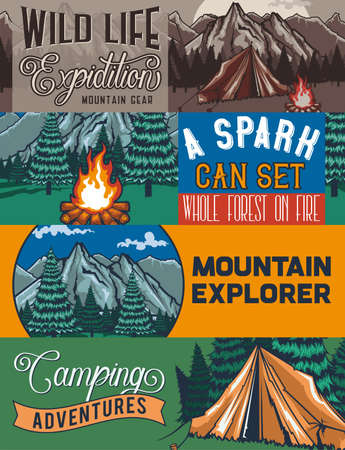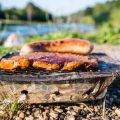A Brief Colonial History and Curry’s Journey to Britain
Curry, as we know it in Britain today, is a dish steeped in the complexities of colonial history. Its journey to British shores began in the 17th and 18th centuries, when the East India Company expanded its reach across the Indian subcontinent. British administrators, soldiers, and traders stationed abroad encountered a dazzling array of regional spices and culinary techniques utterly unlike anything found in their homeland. Upon their return, they brought with them an appetite for these bold flavours—alongside recipes adapted for British kitchens. Over time, curry evolved from an exotic curiosity served at elite tables into a beloved national staple. By the Victorian era, Anglo-Indian dishes like kedgeree and mulligatawny soup had already made their mark on British cuisine. Fast forward to post-war Britain and waves of South Asian immigration, and curry houses became fixtures in nearly every city. Today, curry is more than just a meal; it represents Britain’s multicultural heritage, fusing influences from India, Bangladesh, Pakistan, and beyond. This rich tapestry of tastes now finds new expression even outdoors—around British campfires, where classic curries are reimagined as hearty, fire-cooked meals for adventurers hungry for both sustenance and history.
Choosing Authentic and Practical Ingredients for the Campfire
If you’re aiming to craft a proper British campfire curry, the key is in balancing tradition with the rugged reality of outdoor cooking. While it’s tempting to dream of bustling spice bazaars, practicality must rule when you’re miles from the nearest shop and the weather can turn on a sixpence. Here’s how to source what you need without sacrificing authenticity—or your sanity.
Essential Spices: Packing Flavour Without the Fuss
Your rucksack isn’t a spice cabinet, but that doesn’t mean you should settle for blandness. The cornerstone spices for a classic Anglo-Indian curry—think garam masala, cumin, coriander, turmeric, and mustard seed—are all robust enough to survive a camping trip if stored airtight. For an extra touch of British nostalgia, don’t forget a pinch of smoked paprika or even a dash of Worcestershire sauce for that unmistakable homegrown tang.
Practical Tip: Spice Blends Over Individual Pots
| Spice Blend | Flavour Profile | Why It Works Outdoors |
|---|---|---|
| Curry Powder (mild or hot) | Balanced heat and aroma | Compact and multipurpose; minimal faff |
| Garam Masala Mix | Warm, fragrant finish | Adds depth at the end; easy to carry |
Fresh Ingredients: Choosing Wisely for British Weather
The unpredictability of the British outdoors means fresh ingredients must be chosen for durability as much as taste. Hardy veg like onions, carrots, and potatoes are classic and transport well. Tomatoes (tinned if rain’s on the cards) and chickpeas are both authentic and practical. For protein, chicken thighs or tinned fish (such as mackerel or sardines) evoke colonial influences while surviving several days in a cool bag.
Quick Reference: Fresh vs. Packaged Ingredients
| Ingredient Type | Best Options for Camping |
|---|---|
| Vegetables | Onions, carrots, potatoes, tinned tomatoes |
| Protein | Chicken thighs (pre-marinated), tinned fish or lentils |
Sourcing Locally and Adapting On-the-Fly
Bespoke spice shops in British towns or even high-street supermarkets now stock most essentials, so grab your supplies before heading out. However, always be ready to improvise—if local butchers have game or lamb, swap it into your recipe for a truly regional twist. Forage wild garlic or nettles in spring to bolster your curry with something uniquely British.
Conclusion: Authenticity Meets Adaptation
The best British campfire curries don’t rely on perfection—they thrive on resourcefulness. Choose versatile ingredients that can take a knock in your pack and adapt your spice mix to what’s available locally. With this approach, you’ll capture both the spirit of Empire-era adventure and the stoic heart of British outdoor cooking.

Essential Campfire Tools and Techniques for Outdoor Cooking
When it comes to bringing colonial-inspired curries to the British outdoors, your success hinges on the kit you pack and the techniques you deploy. British weather is unpredictable and campsite rules can be strict, so preparation is everything. Here’s a down-to-earth guide to assembling a no-nonsense camp kitchen that stands up to Britain’s temperamental elements while delivering the smoky, spice-laden flavours of a proper campfire curry.
The Core Kit: What Every Curry-Loving Camper Needs
Start with the backbone of any outdoor cooking setup: a sturdy fire pit or portable grill suitable for UK campsites (many ban open fires—always check ahead). Invest in a cast-iron Dutch oven or heavy-bottomed pot; these distribute heat evenly and handle high temperatures, perfect for simmering robust stews and curries. Don’t forget long-handled tongs, a solid spatula, and a fireproof glove—British brambles and nettles can be unforgiving, as can flying embers.
Fuel Choices: Working With Local Conditions
British hardwoods like oak and beech provide steady heat and impart subtle smokiness to your dishes. If wood fires are off-limits, opt for lumpwood charcoal—avoid anything with additives that could taint your spices. Always carry kindling and waterproof matches or a reliable ferro rod; British rain waits for no one.
Fire Management: The Key to Consistent Curries
Mastering fire control is half the battle. Build a classic pyramid stack for efficient burning, and let your wood burn down to glowing embers before placing your pot over the heat. This gives you a consistent temperature ideal for slow-cooked curries. Keep water on hand to dampen hot spots or manage flare-ups—a crucial safety step on busy UK sites.
Curry Techniques Tailored to the British Outdoors
Browning onions over open flame brings deep sweetness to your base, while dry-toasting whole spices in your Dutch oven unlocks essential oils. Add pre-measured spice blends in resealable bags for convenience—nothing spoils a wild curry like wind scattering your garam masala across the campsite. Remember, patience is vital: allow curries to bubble away gently so flavours meld, giving you an authentic depth reminiscent of colonial-era feasts under British skies.
Keeping It Clean and Responsible
Always bring eco-friendly soap, scourers, and collapsible washing tubs. Leave no trace; dispose of ashes responsibly and keep your cooking area tidy—wildlife on British sites has a nose for leftovers. A disciplined approach ensures future campers can continue enjoying both the countryside and bold, colonial-inspired campfire cuisine.
4. Classic British Curry Recipes with a Campfire Twist
Cooking up a proper British curry over an open flame isn’t just about taste—it’s about bringing history and culture to the wild. Here, we’ll walk you through two iconic British Indian curries, Chicken Tikka Masala and Vegetable Balti, both adapted for rugged campfire cooking. With a few clever tweaks, these classics can be whipped up in the great outdoors, delivering rich flavours and hearty satisfaction after a long day’s trek.
Chicken Tikka Masala: The Campfire Edition
Step-by-Step Instructions
| Step | Description | Kit Needed |
|---|---|---|
| 1 | Marinate bite-sized chicken pieces in yoghurt, lemon juice, garlic, ginger, and garam masala. Let it rest in a sealed container (ideally overnight in your cool bag). | Reusable container, mixing bowl |
| 2 | Thread marinated chicken onto skewers and grill directly over embers until slightly charred and cooked through. | Metal skewers or sticks, grill rack (if available) |
| 3 | In your campfire pot, heat oil and fry chopped onions until golden. Add tinned tomatoes, tomato puree, spices (turmeric, cumin, coriander), and a splash of water. | Cast-iron pot or heavy pan, spoon |
| 4 | Add grilled chicken to the sauce. Simmer for 10–15 minutes. Stir in a dash of cream or coconut milk for richness. | Spoon, lid for pot (optional) |
| 5 | Serve hot with pre-cooked rice or flatbreads warmed over the fire. | Mess tin or enamel plate |
Vegetable Balti: Veggie Power by the Flames
The Outdoor Method
- Chop seasonal veg: Think potatoes, carrots, peppers, peas—whatever’s light to pack and doesn’t bruise easily.
- Sizzle onions & garlic: In your pan with a glug of oil till golden and aromatic.
- Add spice blend: Use pre-mixed Balti powder or combine turmeric, cumin, coriander, fenugreek and chilli powder from a small jar brought from home.
- Toss in veg & tinned tomatoes: Stir well; add a splash of water if needed. Simmer until veggies are tender (about 20 minutes over steady coals).
- Finish with fresh coriander: If you’ve packed it—chopped and sprinkled on top right before serving.
- Mop up with naan or chapati: Warmed briefly over the fire for that smoky touch.
No-Nonsense Tips for Campfire Curries
- Packing smart: Pre-mix spices at home to save faff at camp.
- Tin power: Tinned tomatoes and chickpeas are invaluable—no need for refrigeration.
- Bread boost: Flatbreads travel better than rice; just warm them up when ready to eat.
- Clever kit: A cast-iron skillet is worth its weight if you’re serious about flavourful crusts and even cooking on open flames.
A cracking British campfire curry is all about making do with what you’ve got, leaning into those classic colonial influences while using sturdy ingredients that survive the wild. Whether it’s smoky tikka skewers or a bubbling veggie balti, these recipes guarantee proper nosh around the campfire—rain or shine.
5. Accompaniments: Homemade Breads and Sides by the Fire
No British campfire curry is complete without a handful of homemade accompaniments, bringing together practicality, heritage, and that essential touch of comfort under open skies. The heart and soul of any curry night—especially when channelled through the lens of Britain’s colonial culinary mash-up—are the breads and sides. Here’s how to recreate authentic naan, chapatis, and classic companions like onion bhajis or minted yoghurt, all using little more than a campfire and some basic kit.
Rustic Campfire Naan
Naan is traditionally made in a tandoor, but out in the wilds, you can improvise with a heavy skillet or even cook straight on hot stones. Mix 250g strong bread flour with 7g instant yeast, a pinch of salt, 1 tsp sugar, 2 tbsp plain yoghurt, and enough warm water to make a soft dough. Knead until smooth and leave to rise (tucked near the fire for warmth). Divide into balls, flatten with your hands, then slap onto your hot pan or stone. Cook until blistered—brushed with ghee if you have it for that smoky richness.
Chapatis: Quick and Reliable
Chapatis are the survivalist’s friend: flour, water, salt—that’s it. Mix wholemeal flour (about 200g) with just enough water to form a pliable dough. Pinch off balls, roll flat (use your hands or a bottle), then toast over direct heat on your griddle or frying pan. They puff up beautifully and are perfect for scooping up curry by lamplight.
Onion Bhajis by Torchlight
For something crunchy on the side, onion bhajis are surprisingly achievable over flames. Slice an onion thinly; mix with 100g gram flour, a pinch of baking powder, salt, cumin seeds, and chilli flakes. Add just enough water to bind. Drop rough spoonfuls into hot oil in a sturdy pan over the fire—watch carefully—and turn when golden. Drain on paper or leaves.
Minted Yoghurt: A Cooling Counterpoint
No need for anything fancy—a pot of natural yoghurt mixed with chopped mint (or wild mint if you’re lucky), a squeeze of lemon juice, and salt brings soothing balance to fiery curries. Serve chilled if possible, or simply keep it shaded until ready.
The joy of these campfire-friendly sides is their adaptability: minimal ingredients, maximum flavour, and techniques that require only patience and resourcefulness. Whether you’re huddled under canvas in the Highlands or gathered round driftwood on a Cornish beach, these accompaniments root your meal in both tradition and wild practicality—British outdoor cooking at its best.
6. Keeping the British Weather at Bay: Survival Tips for Outdoor Dining
If there’s one thing as unpredictable as a curry’s spice level, it’s the British weather. Whether you’re huddled in the Lake District or braving the blustery Cornish coast, rain and wind are more companion than foe. Here’s how to ensure your campfire curries stay piping hot and your morale never falters—even if it’s bucketing down or blowing a hoolie.
Windproofing Your Feast
First order of business: don’t let a gust put out your flame. Set up camp in the lee of a sturdy hedge, stone wall, or tent flysheet—anything that’ll shield your fire from a northerly gale. A simple windbreak fashioned from tarps and bungees does wonders. Keep matches and lighters dry by storing them in an old mint tin; nothing says “damp squib” like fumbling with soggy kindling when you’re gagging for a bite.
Rain-Ready Cooking Setups
When the heavens open, channel that stoic British grit. A brolly lashed to a walking pole can double as a makeshift canopy over your cooking area. Better yet, string up a tarp between trees to keep both chef and curry dry. Opt for cast iron cookware—it holds heat brilliantly, so your vindaloo won’t go tepid while you dash for cover.
Keeping Curry Hot—No Matter What
Insulation is key. Wrap finished pots in thick towels or stash them in a sleeping bag while you plate up; this old army trick keeps food warm far longer than you’d expect. For real cold snaps, pre-warm enamel mugs or bowls by pouring in hot water before serving—that way your korma stays steaming even on frosty evenings.
Mood Management: Spirits Up Against the Elements
A proper brew does more than warm your hands—it lifts flagging spirits when drizzle threatens to dampen enthusiasm. Pack a flask of strong builder’s tea or knock together some masala chai on the side of the fire. And remember: nothing knits together a crew quite like belting out a song or spinning tales of past adventures while waiting out the worst of the weather.
Toughness isn’t just about gritting teeth through gales; it’s about adapting, improvising, and making sure that, come rain or shine, everyone gets their fill of curry and camaraderie under Britain’s wild skies.
7. Bringing it All Together: Creating Community Around the Campfire
There’s a unique magic that unfolds when British curries meet the crackle of an open fire and the bracing air of the countryside. It’s more than a meal—it’s a gathering, a celebration of heritage, and a testament to the bonds forged outdoors. The tradition of communal eating is deeply ingrained in British culture, from the boisterous pub lunches to family picnics on windswept moors. But around the campfire, those traditions take on new life, echoing the colonial influences that have shaped our palates for generations.
The Art of Camaraderie
No one is left out when there’s a pot of curry simmering over glowing embers. Whether you’re huddled in a circle on battered folding chairs or perched on logs scavenged from the woods, sharing food cooked over fire strips away pretence. Everyone chips in—someone stirs, another ladles, someone else passes round enamel mugs of tea or something stronger. The act of cooking together becomes an equaliser, building camaraderie with every shared task and every burst of laughter under the open sky.
Stories by Firelight
As dusk settles and plates are refilled, conversation flows freely. British campfire meals carry stories from everywhere—tales of far-flung travels, misadventures on Dartmoor, or memories of nan’s secret curry blend. The fire draws out these stories as surely as it infuses smoky flavour into your tikka masala. For many, this ritual is as important as the food itself: stories passed between friends old and new, binding everyone tighter with each retelling.
The Enduring Tradition of Outdoor Feasting
The British outdoors has always been about more than just braving the elements; it’s about creating connections—with nature, with history, and with each other. Campfire curries are a symbol of this tradition—resourceful, hearty, adaptable. They bring people together in places where signal drops and distractions fade away. In these moments, you’re not just eating—you’re partaking in a living tradition that celebrates resilience, ingenuity, and above all, community.
So next time you gather around a campfire with friends or strangers-turned-comrades, remember: every spoonful is part of something bigger—a fusion of cultures and kinship that only grows richer beneath Britain’s ever-changing skies.


